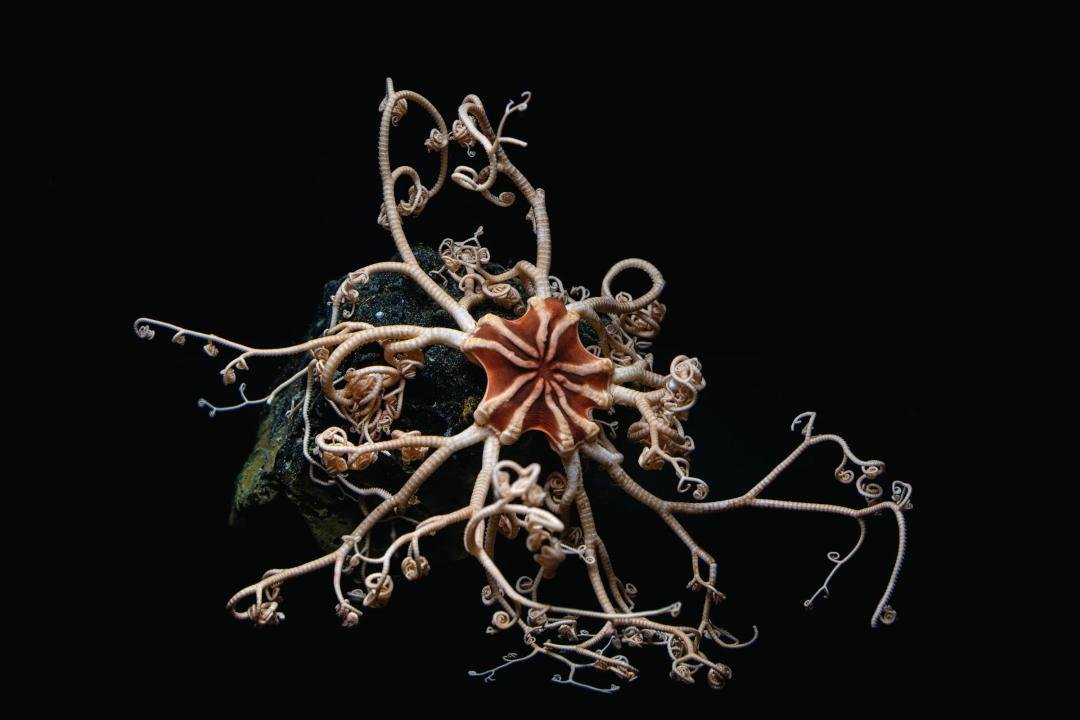A feeding frenzy of 150 whales marks a species’ comeback
One of the largest known congregations of filter-feeding whales is recorded off the coast of Antarctica.
Energy storage in Moss Landing: A smoky challenge to a new chapter
Grid-scale batteries could be the future of green energy. But the world’s largest energy storage site has struggled to operate during its first 18 months.
A refuge within a refuge: Corals, sponges flourish in marine protected areas
Deep below the Monterey Bay’s watery surface lies a rainbow of sponges and corals. Now, researchers have discovered that these still and silent creatures benefit from a state law originally designed to protect fish.
Mindsets formed at the beginning of the COVID-19 pandemic predict well-being several months later, Stanford psychologists find
Mindsets developed in the first 10 days of the COVID-19 pandemic influenced people’s emotions and health behaviors – and ultimately predicted their well-being six months later, Stanford psychologists find.
Stanford engineers develop a simple delivery method that enhances a promising cancer treatment
A gel composed of only two ingredients can provide a temporary, hospitable environment that helps activate modified immune cells to attack cancerous tumors.
Small, but mighty, Monterey astronomy institute continues making scientific advances
The Monterey Institute for Research in Astronomy is a privately-funded nonprofit astronomical observatory dedicated to research and education.
Stanford engineers develop a stretchable display that could revolutionize how humans interact with electronics
After discovering a groundbreaking way to create an elastic light-emitting polymer, Stanford chemical engineers have developed high-brightness, stretchy color displays.
Point Sur Lightstation: Reopened and restoring
In early March 2020, Point Sur Lightstation welcomed its largest volunteer training class in years. Approximately 80 people were ready to give their time to the historic site. But the first day of training took an unexpected turn.
Monterey Bay Aquarium to unveil new ‘Into the Deep’ exhibition
A dark, frigid world that is low in oxygen and high in acidity sounds like a hostile habitat to most. But these features are required for the strange yet beautiful animals living in the deepest, darkest corners of the ocean.
Respecting the raptors while climbing at Pinnacles
In Pinnacles National Park, falcons, hawks, eagles and other birds of prey occasionally glide right beneath climbers ascending the park’s iconic rocky peaks.
Popular ’80s party drug slowly gains respect as PTSD treatment
Study led by UCSF researcher shows MDMA could help millions with the psychiatric disorder.
Confirmed: Monarchs back in bigger numbers
After encouraging signs that more monarch butterflies were returning to Pacific Grove for overwintering than in previous years, the creatures’ massive comeback is now clear.
Drone keeping an eye on Elkhorn Slough
A drone buzzes above Elkhorn Slough, zipping back and forth in an elongated zig-zag pattern. As it glides through the air, it takes snapshots of the surface to monitor plant life and ground elevation.
The truth behind pseudoscience: Tarot cards
Your past, present and future—it’s all in the cards. Or is it?
New computer program rapidly detects homes, buildings damaged by wildfires
Developed by scientists at Cal Poly in San Luis Obispo and Stanford University, DamageMap evaluates the destruction by scrutinizing post-wildfire aerial and satellite images.
Charting the “Bloody” Brine Flows from an Antarctic Glacier
Photographs and field observations yield a more complete historical record of the ebbs and flows of the so-called Blood Falls on Taylor Glacier.
Stanford professor spotlights evolutionary tree concepts with campus trees
More than a century of attentive groundskeeping has turned the Stanford campus into a museum of mathematical phylogenetics, says Noah Rosenberg, creator of the Stanford X-Tree Project.

















